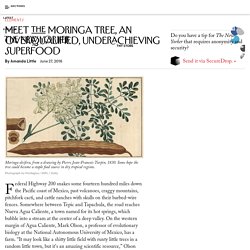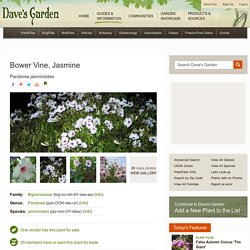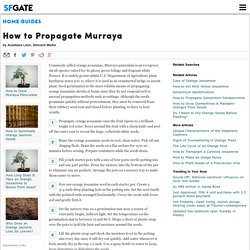

Meet the Moringa Tree, an Overqualified, Underachieving Superfood. Federal Highway 200 snakes some fourteen hundred miles down the Pacific coast of Mexico, past volcanoes, craggy mountains, pitchfork cacti, and cattle ranches with skulls on their barbed-wire fences.

Somewhere between Tepic and Tapachula, the road reaches Nueva Agua Caliente, a town named for its hot springs, which bubble into a stream at the center of a deep valley. On the western margin of Agua Caliente, Mark Olson, a professor of evolutionary biology at the National Autonomous University of Mexico, has a farm. “It may look like a shitty little field with runty little trees in a random little town, but it’s an amazing scientific resource,” Olson said, as he led me through the hilly, hardscrabble acre that constitutes the International Moringa Germplasm Collection.
Olson grew up on the edge of Tahoe National Forest, in California, where his father worked as a civil engineer for the U.S. Forest Service. Hot and dry are precisely the conditions in which the Moringa thrives. How to Keep your Petunias Looking Full and Flowering.
Herbs. Water Plants. Plumeria Terms and Lingo - Southern California Plumeria Society. Collecting Petunia seeds. Cestrum diurnum. Cestrum diurnum (Din Ka Raja) is a species of Cestrum, native to the West Indies.

Common names include Day-blooming Cestrum, Day-blooming Jessamine, and Day-blooming Jasmine. Also known as Din ka Raja (King of the day), in Urdu and Hindi. The scent of this quick-growing and evergreen woody shrub, often used for screens and borders, is released by day. Cestrum diurnum is easily propagated from the seed, which it produces in abundance.[1] Description[edit] It is an erect evergreen woody shrub numerous leafy branches. The leaves are simple, glabrous, entire, alternate, ex-stipulate, ovate-lanceolate in shape with obtuse apex and obtusely wedge-shaped below.
The Inflorescence consists of a long axillary peduncle which bears short clusters of sweet white-smelling flowers, each cluster supported by a leaf-like bract. My Nice Garden: Kesidang, Vallaris glabra, Bread Flowers. Bower Vine, Jasmine Pandorea jasminoides. Category: Vines and Climbers Foliage Color: Unknown - Tell us Bloom Characteristics: Unknown - Tell us Water Requirements: Average Water Needs; Water regularly; do not overwater Where to Grow: Grow outdoors year-round Suitable for growing in containers Height: 4-6 ft. (1.2-1.8 m) Spacing: 24-36 in. (60-90 cm) Hardiness: USDA Zone 9a: to -6.6 °C (20 °F) USDA Zone 9b: to -3.8 °C (25 °F) USDA Zone 10a: to -1.1 °C (30 °F) USDA Zone 10b: to 1.7 °C (35 °F) Sun Exposure: Full Sun Danger: Unknown - Tell us Bloom Color: Pink Red White/Near White Bloom Time: Late Spring/Early Summer Mid Summer Foliage: Evergreen.

How to Propagate Murraya. Commonly called orange jessamine, Murraya paniculata is an evergreen shrub species valued for its glossy green foliage and fragrant white flowers.

It is widely grown within U.S. Department of Agriculture plant hardiness zones 9 to 11, where it is used as an ornamental hedge or accent plant. Seed germination is the most reliable means of propagating orange jessamine shrubs at home since they do not respond well to asexual propagation methods such as cuttings. Although the seeds germinate quickly without pretreatment, they must be removed from their rubbery seed coat and rinsed before planting, to have to best results.
Propagate orange jessamine once the fruit ripens to a brilliant, bright red color. Will Your Phalaenopsis Orchid Bloom Again? Experiment. Taking late cuttings of Tropical Hibiscus. Toxic and Non-Toxic Plant List - Cats. Rose Cactus or Leaf Cactus - Pereskia bleo - Edible cactus fruit. Practical Gardening: Pereskia Bleo aka Rose Cactus or Wax Rose.
Finally, I was able to positively identify this beautiful yet potentially harmful plant growing in our front yard.

All I knew was that the plant grew from a cutting that came from Davao. Thanx to the kind folks at the forums of gardenweb.com, I learned that the plant is of the genus Pereskia (leafy cactus). From that lead, I searched the web and found the plant to be Pereskia Bleo, also known by esoteric names such as Rose Cactus or Wax Rose. Saying it's "potentially harmful" is a bit of an understatement, however. "Vicious" as one blogger described it is more apt. The plant is very easy to propagate with cuttings. Hand Pollinating & Hybridizing Adenium (Desert Rose)